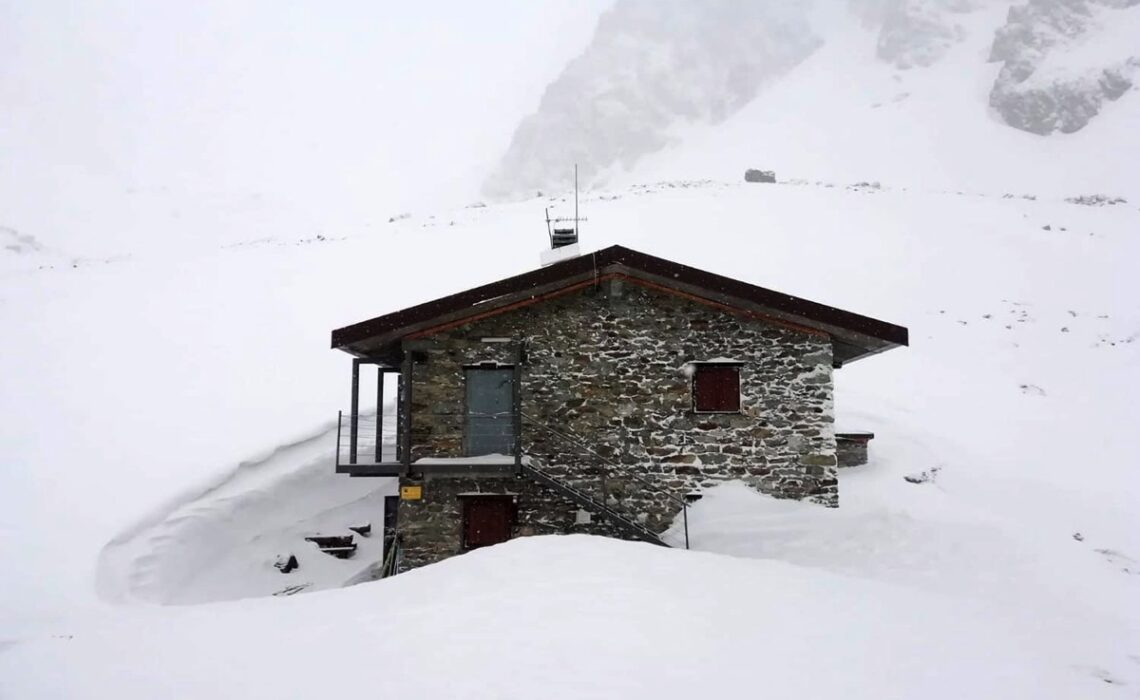
What is a refuge?
The answer to the question “what an alpine refuge is” is not something that is taken for granted and defined.
Almost everyone could argue that this is a structure built to accommodate climbers, but what identity do they assume? And what meaning does each of us give to the term mountaineering? The refuge is a shelter equipped with the essential things to stay there temporarily.
However, it could also be defined as a place of threshold, <<the meeting point between the infinitely large nature of high altitudes and the infinitely small of man […] protective and maternal membrane.>> (De Rossi A., in Dini R., Gibello L., Girodo S., Rifugi e bivacchi. Gli imperdibili delle Alpi. Architettura, storia, paesaggio).
The refuge differs from other man-made architectures for a series of symbolic, technical, cultural and constructive reasons.
This building, identified in a set of structures ranging from support points at low altitudes to those unattended at higher altitudes, plays an important role in the birth and evolution of mountaineering practice << […] not only as a human enterprise but also as a structured knowledge of “other” territory>>.
High land as a barometer of environmental criticalities

In addition to historical values, the concept of memory is also associated with refuges, understood with a double meaning: on the one hand the mountaineering feats and on the other the memory of characters and facts handed down to posterity thanks to the dedication of these building works.
Among the reasons linked to the conquest of the peak as a challenge of man to nature, we also find cases of construction of shelters linked to the impulse of scientist. They argue that the observations carried out on the summit led to more correct results than those obtained from those carried out in the valley as they were not affected by atmospheric phenomena found in places located at low altitudes.
<< […] the higher the altitude, the more exact the observation will be because it is not affected by the atmospheric phenomena that can be found at the bottom of the valley.>> in addition to a place for studies, however, it was also an object of study, frequented by geologists, astronomers, botanists, physicists, geographers and individuals from numerous other branches of science.
<< The delicate glacial and rocky context constitutes a sensitive barometer of the environmental criticalities in progress […] >> Umberto Monterin himself in his contribution of the Manual of Scientific Instruction for Mountaineers of the CAI, published in 1934, he invited mountain visitors to assist scholars in collecting meteorological data, suggesting them to take note and communicate if they observe rain above 3500 m a.s.l.
Today, however, this type of phenomenon that were unusual for Monterin, is now very frequent and this is because of the well-known issue of climate change, which in addition to the volumetric and linear reduction of glacier also leads to << […] reflection on the finiteness of resources and the precariousness of nature’s balance […]>> This led to the << […] development of new culture of action, planning and land management models. >>
The studies on the mountain, which have continued up to the present day, have aroused interest in the mountain environment, that do not only concern the climatic aspect but also other branches that are not purely scientific, such as the management of the territory, its sustainable development, tourism and population, in relation to the phenomena of depopulation and the “new mountaineers”.
A project to study the mountains closely
As already mentioned above, the refuge is a structure whose formal definition is not static and precise but linked to characteristics of promiscuity in the use of spaces.
This leads us to think about the possibility of using some of these spaces as a place to study and observe the mountain environment.
The project for the climatic study and observation laboratory, located inside the Crête Sèche Refuge, is part of a topic of current discussion: the climate change. The purpose of the project does not only concern the creation of a pole for the study of these phenomena in an environment where they can be observe “on the front line”, but also the possibility of giving a new symbol to the Municipality of Bionaz, an attractive site that can obtain the interest of the valle d’Aosta Region, of Universities, that could see it as a branch forn field work, and of the network of research and study institutions in the mountain area, which it could become a new point in the already existing plot.
The most interesting and stimulating part of the project is certainly linked to the location of the intervention site, which implies particular attention due the choice of technology and materials for the construction as well as the construction site itself, with all the problems of transport and thigh working times due to the “extreme” conditions of the project site.
The initial shape of the building derives from the one of the pre-existing one, to keep its memory on a geometric level as a reference point for those who usually frequent the area; however, to give a new image to the building, the volume, rebuilt on the ground floor of the existing one, it has been characterized with a tripartition to externally declare the presence of the three functions inserted inside the structure, in order
to make it perceived by those who arrive at the refuge.
The three portions which the first floor is divided have equal dimensions but differ in the shape of the roof, with the simulation of an horizontal movement of the ridge from the center towards the West side, which has three different slopes and is designed to recall the variation in height difference during an ascent. The volume of the first floor also juts out on the four sides, highlighting the part that is being reconstructed, not only through the use of materials and textures different from the pre-existing ones.











